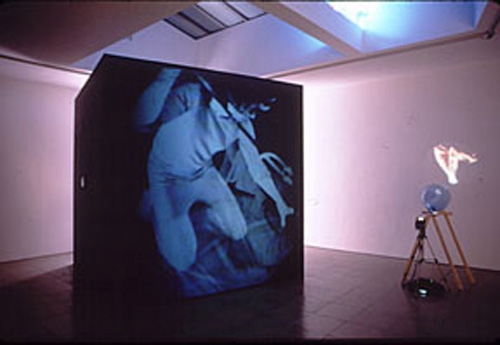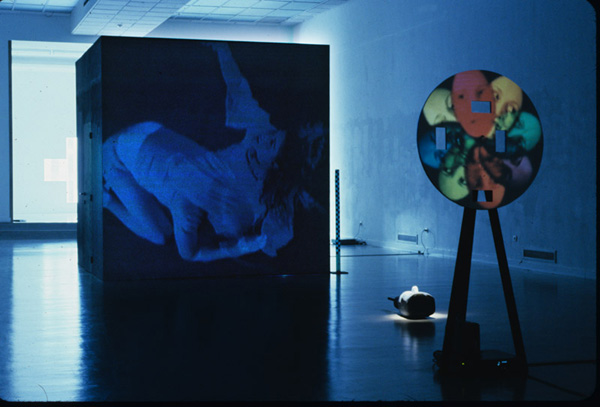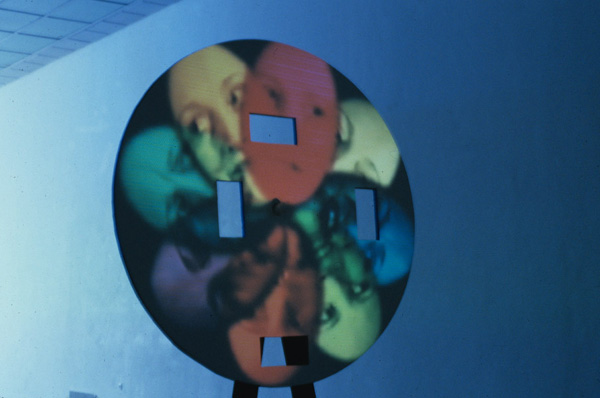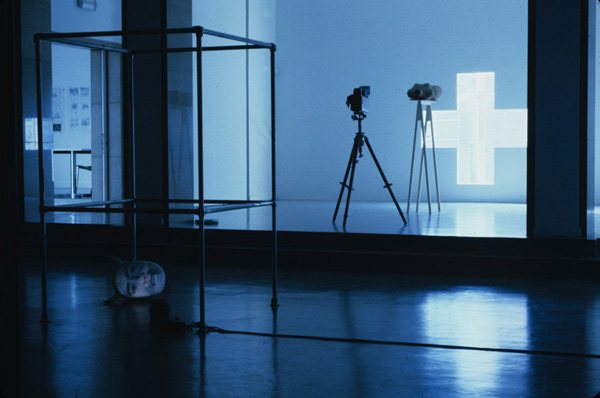Blue Dilemma
May. 19 - May. 11, 2001





The electrical and mechanical processing of a light image is the central function of any visually mimetic device from a 3D widescreen laser projection to a simple point-and- shoot camera. The camera obscura, in its simplest form, uses an aperture to focus on an image, then the lens was introduced and so the complications began in the long-evolving history of the moving image. Blue Dilemma takes the form of a fantastical machine, metaphorically incorporating numerous inventions from this history. Set out in a line suggesting the passage of an optical image from one end to the other, the installation strings together the historical characters and image events involved.
Oursler states, "It's essentially a whimsical machine for image processing. The image enters the system and is transformed as it moves through, and so too (hopefully) is the viewer. There are elements from the major inventions in the history of the moving image, notably the camera obscura, the Nipkow disk, the rainbow, the vacuum tube lens, the television and John L. Baird's ventriloquist dummy, Stooky Bill, the first figure to be teletransported... I should also mention the devil and the color blue. Blue is the media color for me, the flickering cold glow which one sees at night when passing the window of a house where someone is watching television: the corrosive, deadly, beautiful color of electronic waves washing over flesh. The devil too, and the different forms in which it has been depicted, kept appearing during my research with alarming frequency. I had to include this controversial figure that crops up whenever there are any new technological inventions.
"The Nipkow disk was the first mechanical image scanner invented by a 19-year-old German engineer, causing Hitler to claim television as fundamentally German. It is a device for dissecting images and has its roots in early animation machines such as the zoetrope. The spinning disk with its spiral of holes chops an image into smaller parts to be encoded, transmitted, decoded and finally reconstructed in another location. The scanning process says something about contemporary landscape, picture-space and fantasy space. Physical space was to change forever in the light of this invention.
"A large black box, or room, stands in the center of the installation, inviting viewers to enter the mechanism of the camera obscura. The outside serves as a black projection screen on which two out-of-focus figures struggle in the void. Once inside, through the glass darkly, viewers find a lens which separates dark from light, in from out, and up from down. It is a physical representation of the eye, the camera and the movie theater. On top of the box or near the work is a small blown- glass devil with a blue electric light, based on a devil from Kircher's drawings of the camera obscura."